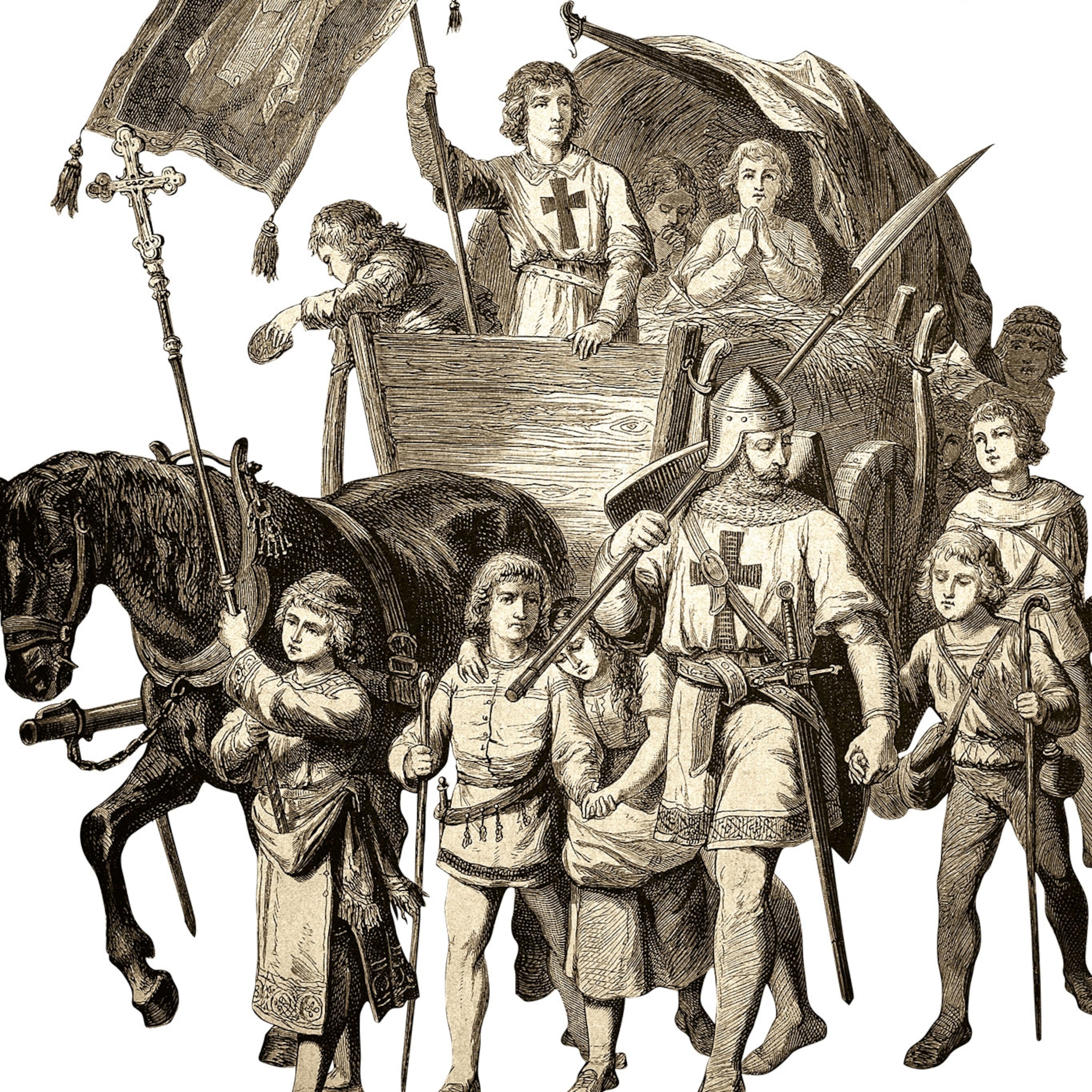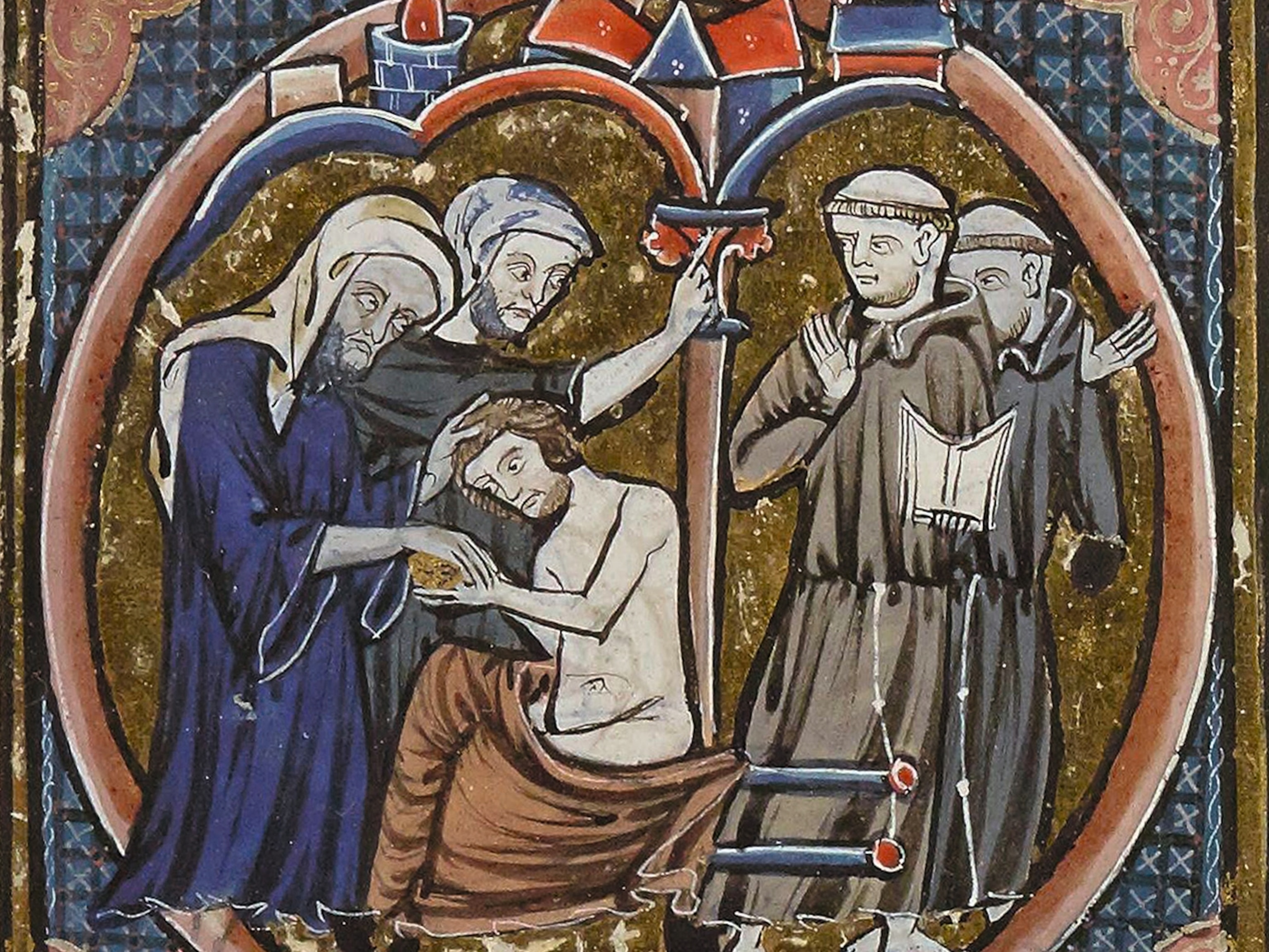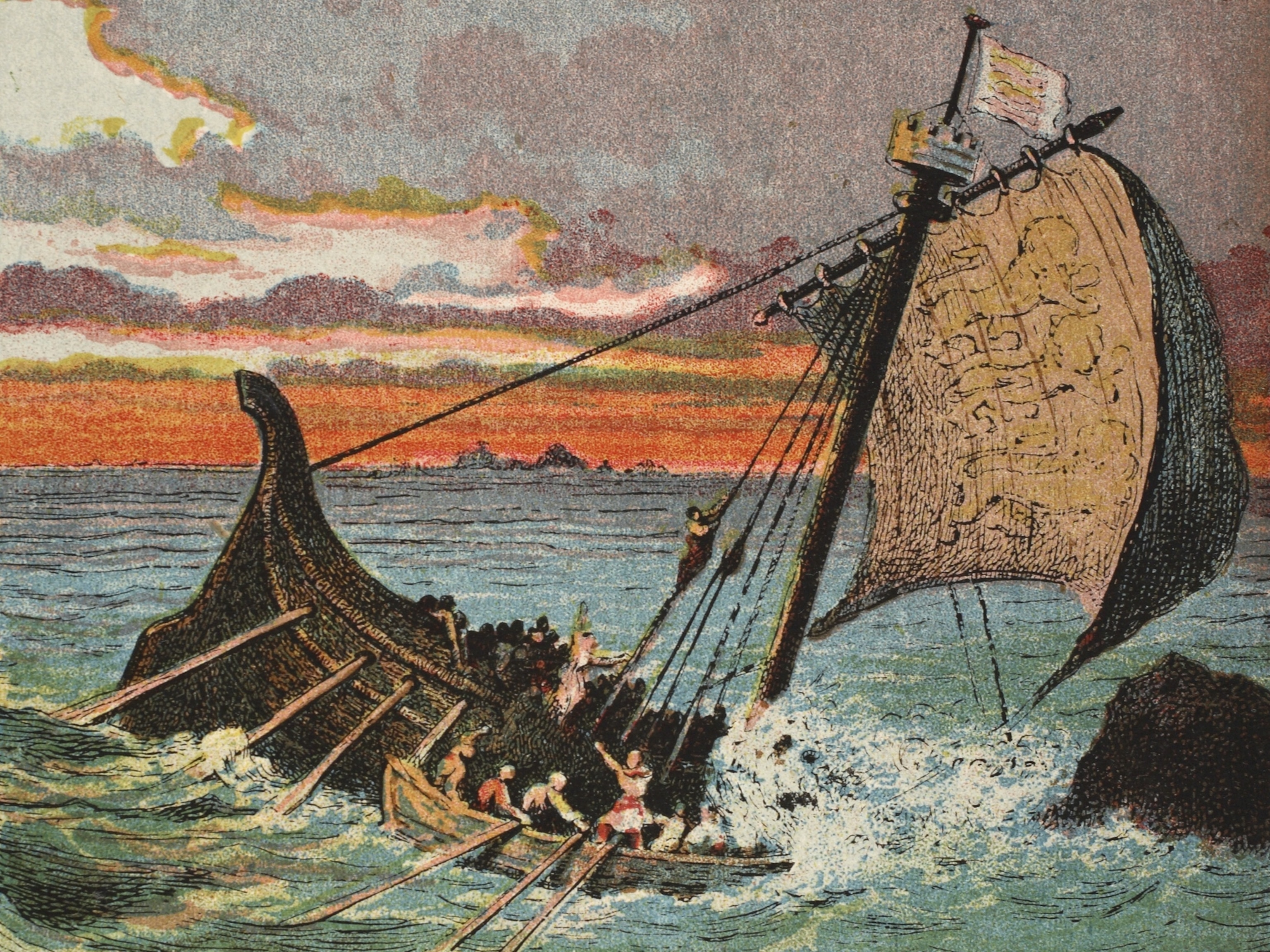
The original 'Assassins': Medieval warriors of Alamut
High inside a secret mountain fortress, the Nizari Ismaili, a small Muslim sect, struck terror into the powers fighting over the Holy Land in the Middle Ages. Dubbed the "Assassins" by their enemies, the Nizari held power for just 300 years, but their impact would last for centuries.
Conrad of Montferrat, an Italian crusader, was preparing for his coronation as king of Jerusalem, in Tyre, in April 1192. Making his way down a narrow street of the city, he was attacked by two men disguised as monks, who stabbed him to death.
Although historians still speculate who ordered the attack, there is little doubt as to the identity of the killers. They were not monks, but members of a secretive Muslim sect with strongholds seated high in the mountains of Persia and Syria. Headquartered in an impenetrable Persian castle, Alamut, these agents specialized in targeted killings and espionage. Infiltrating the ranks of their enemies, they would strike their targets, often with knives, and were willing to die for their mission. Syrian enemies called them the Hashishim, but they are better known today by the European crusaders’ term: Assassins.
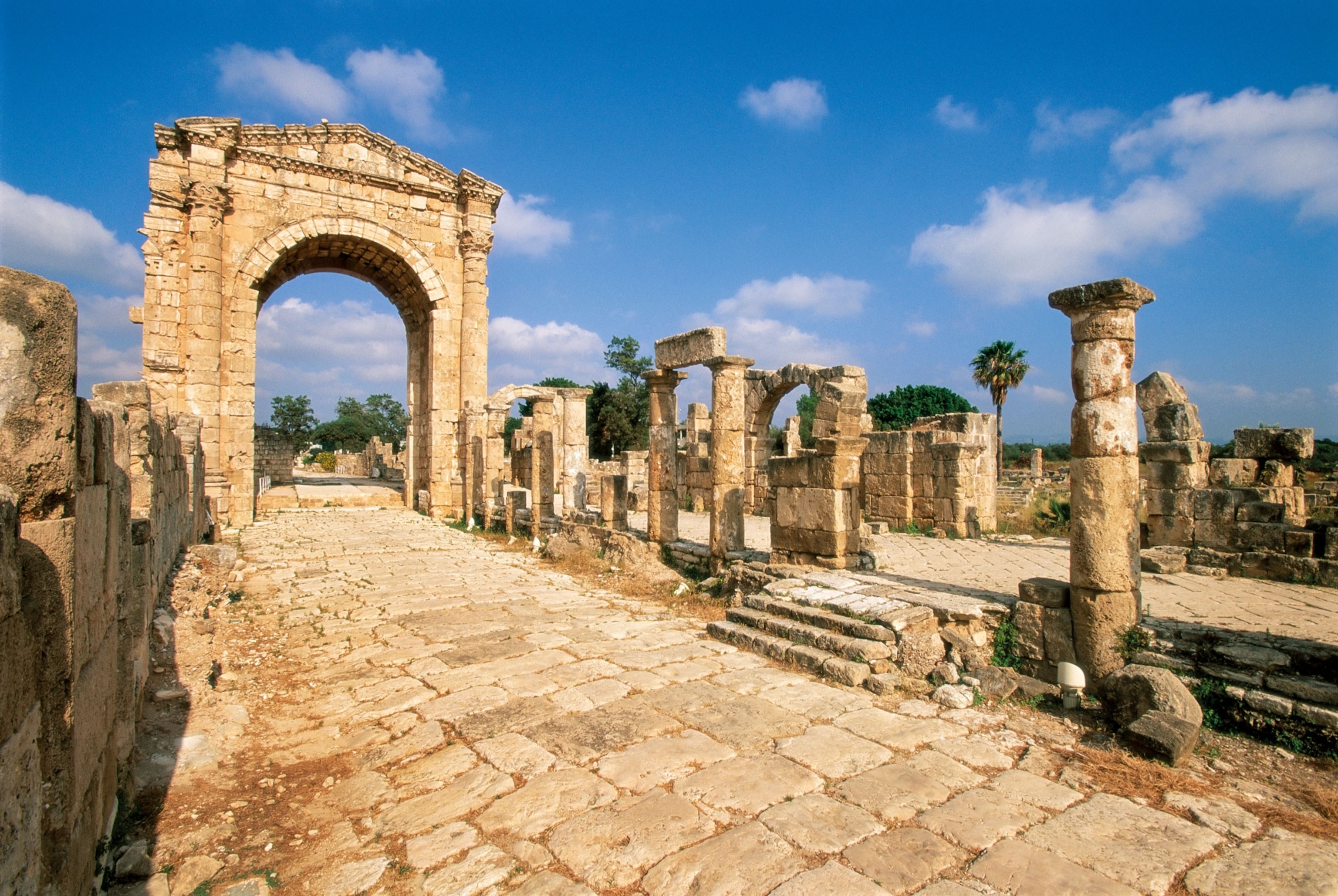
Outsiders' accounts
Perhaps the first European account of the Assassins comes from a Spanish rabbi, Benjamin of Tudela, who traveled through Syria in 1167. He told of a mysterious leader, the Old Man of the Mountain, who led a sect of warriors who dwelled in hidden mountain fortresses.
The dreaded Assassins were at the peak of their power in the 12th century. Much of what is believed about them comes from accounts of fascinated European crusaders and from the pens of their sworn enemies, Syrian Sunni chroniclers. Their very biased accounts must be taken with a degree of skepticism, for they were intended at times to entertain or defame. They extolled the Assassins' strength and zeal while making wild exaggerated claims about their lifestyles.
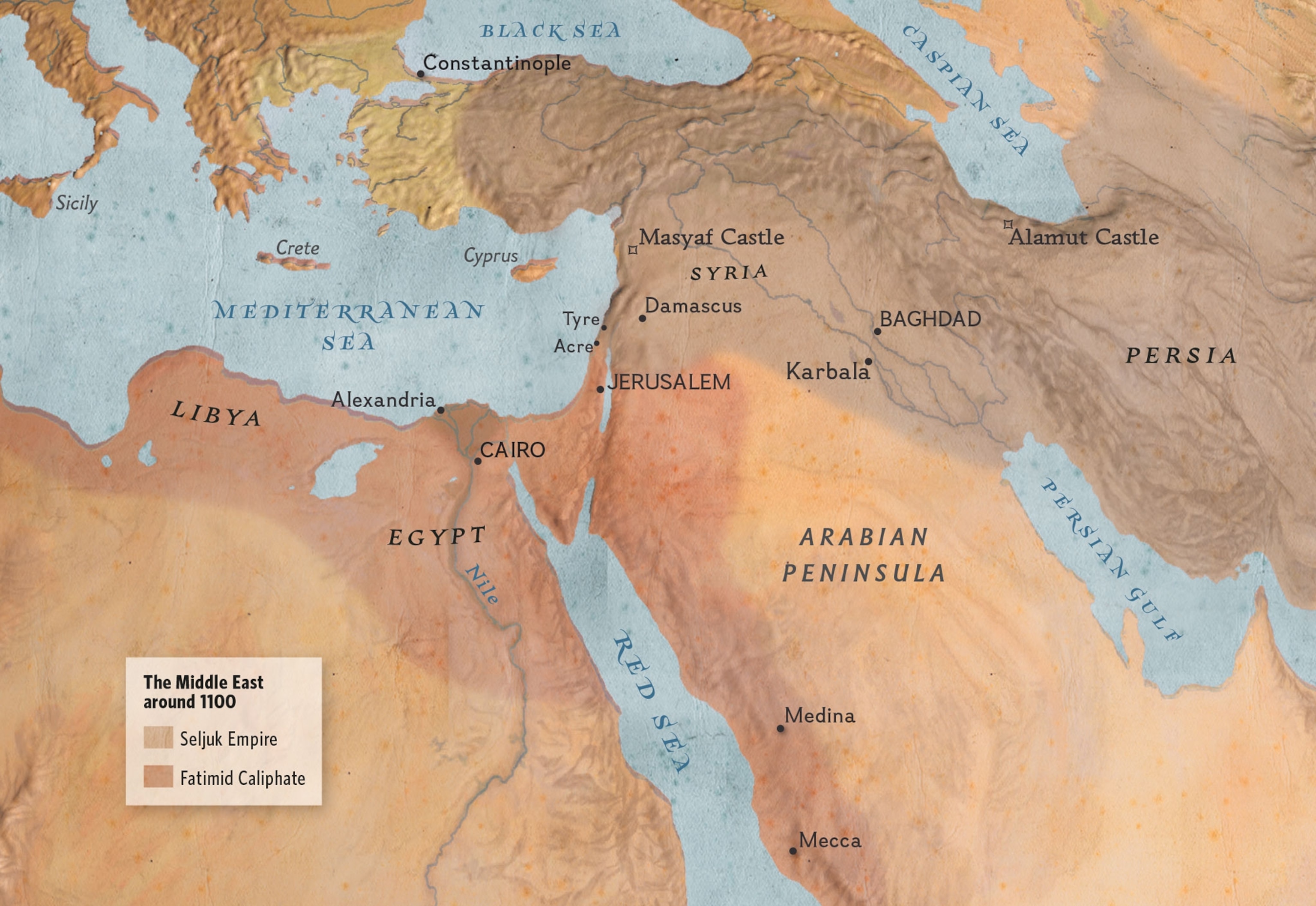
One was penned by a 12th-century Archbishop of Tyre, William II, a crusader. He estimated their numbers to be around 60,000 and wrote about their extreme devotion to their leaders:
It is their custom to instal their master and choose their chief, not by hereditary right, but solely by virtue of merit. Disdaining any other title of dignity, they called him the Elder. The bond of submission and obedience that binds this people to their Chief is so strong, that there is no task so arduous, difficult or dangerous that any one of them would not undertake to perform it with the greatest zeal.
Some European reports suggested they even ate pork and married their sisters. Colorful notions about the Assassins as reckless libertines were reinforced by the publication of The Travels of Marco Polo. The medieval best seller mentions the Syrian Old Man of the Mountain administering a drugged potion to his fanatical followers to facilitate their deadly missions. Since the sect’s nickname, the Hashishim, was derived from the Arabic for “hashish,” Marco Polo’s account helped cement their reputation as drug-fueled thugs. Modern historians, however, regard Marco Polo’s description as something of an invention itself.
Bellicose Beverages?
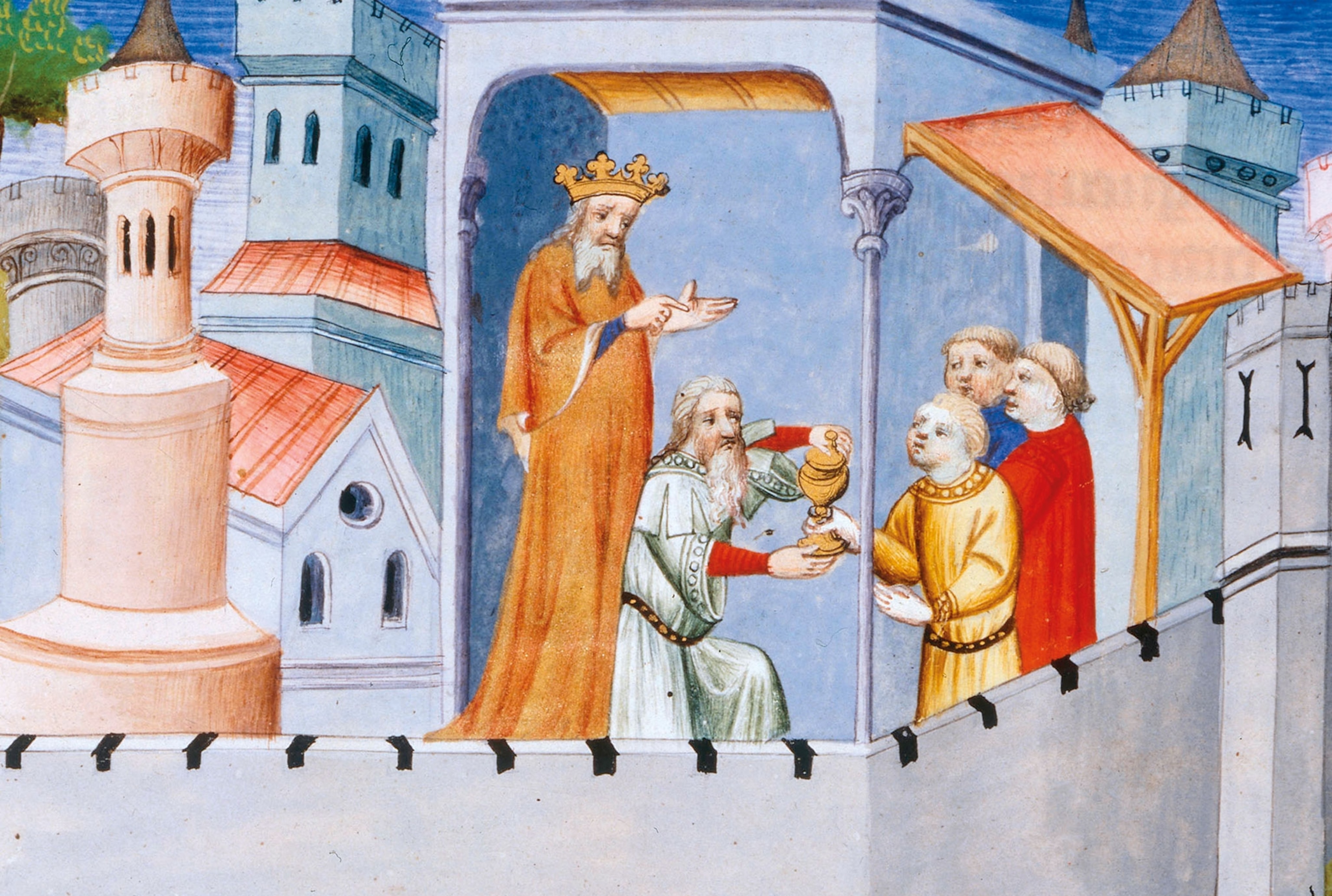
The travels of Marco Polo devotes several chapters to the “Assassins” and their rituals. An illustration from the 1472 edition depicts a beverage being served to Nizari warriors. According to the text, the drink contained drugs to induce hostility and aggression. This falsehood enhanced the Nizari’s fearsome reputation among Europeans, even though the Travels was published well after the Mongols defeated the Nizari in 1256.
Although the sect did pass through a brief phase of libertinism in the 1160s, at most other times in its history the sect was very strict and austere. The use of hashish is not found in any credible Muslim source, even among the Assassins’ enemies. Middle Eastern historian and expert on the Assassins, Bernard Lewis believes that Hashishi was a popular Syrian term of abuse used by the sects’ enemies to discredit them. (See also: Islam's Medical Advances in the Middle Ages.)
Another medieval European misunderstanding was that the sect was specifically targeting Christians. In reality, there was considerable amicable contact between the crusaders and the sect. Around 1251 France’s Louis IX sent envoys to meet them. The meeting may have suited their diplomatic needs at the time, but the sect was largely uninterested in the Christians. It was primarily focused on the tumultuous changes in the Muslim world and the events that had shaped them, which they were also shaping in turn. Their story forms part of a great struggle between empires and local Muslim communities, between Arabs and non-Arabs, city and castle, and the Islamic world’s enduring dividing line—the bitter rivalry between Sunnis and Shiites.

The great divide
In A.D. 632 the Prophet Muhammad died suddenly before he had named an heir. A fierce struggle for leadership arose, and his followers divided into factions: the Sunnis and the Shiites, the two main branches of Islam. Today there are roughly 1.8 billion Muslims in the world, of which an estimated 10 to 13 percent are Shiites. Most Shiites today live in Iran, Pakistan, India, and Iraq.
After the Prophet’s death in the seventh century, Shiites supported Ali ibn Abi Talib, Muhammad’s cousin and son-in-law, as heir, while the Sunnis advocated for Abu Bakr, Muhammad’s friend and father-in-law. The Sunni majority won, and Abu Bakr became the first Muslim caliph. Ali became the fourth caliph in 656, but was murdered in 661. His son and followers were later slaughtered at Karbala in 680 by Sunni rivals. It was an important event that galvanized the Shiite cause.
The Shiite branch grew popular with non-Arabs in newly conquered lands, especially in Persia. The recent converts, while enthusiastically embracing Islam, distrusted the caliphate based in far away Damascus. Over time, the Shiites in Persia began to develop their own traditions, customs, and interpretations. Shiites favored a symbolic and cryptic reading of the Quran, taught through a strict hierarchy. While a mainstream reading of the Quran and adherence to Islamic law was considered sufficient for the masses, according to this new thinking, only an initiated elite could know the ultimate truth hidden in the sacred book.
In the eighth and ninth centuries a new Shiite faction organized around this esoteric interpretation of the Quran. Called the Ismaili, they broke from Shiism in the early 700s, after a succession dispute in which their choice—Ismail—lost. Organized in secret, they created an extensive web of learned missionaries. A strong social dimension informed Ismaili theology, the belief that a mahdi, or divinely guided one, would introduce a longed-for era of equity and light.
Flame of the Fatimids
The new sect, however, was not all about prayer and ideas. In 909 Ismaili revolutionaries seized power in North Africa. Conquering Tunis with the help of Berber tribes, they established the Fatimid Caliphate, named for Fatima, daughter of the Prophet.
In 969 the Fatimids conquered Egypt, and founded a city near the Nile. Its name summed up their triumphant spirit: Al Qahirah, “the Victorious,” known in the West as Cairo. From here, the Fatimids expanded into Palestine and Syria, forming a western Shiite bulwark against the Sunnis in Baghdad.

For a while, the Fatimid star shone brightly, but by the mid-11th century a change was once again sweeping through the Islamic world. Far to the east, a Turkic tribe from Central Asia started to conquer swaths of the Islamic world. Moving west through Persia, these recent Sunni converts, called the Seljuks, moved westward. In 1055 they took Baghdad, where they proved themselves determined defenders of their faith.
Amid the tumult, Ismaili missionaries continued their work of finding and educating new students. In the second half of the 11th century, a 17-year-old Persian named Hasan-e Sabbah began training in the Persian city of Rayy to become an Ismaili missionary. When he completed his education, Hasan was sent to Cairo.
The golden century of Fatimid rule had long ended, and rifts were growing within Ismailism. As the Seljuk grip tightened, the fortunes of Sunni Islam were rising. After three years, Hasan left Cairo and went to work as a missionary in Persia. His work there extended throughout the land: He gathered Ismaili converts and began to organize them against the hated Seljuks. Hasan’s new faction, the Nizari Ismaili, would give rise to the infamous Assassins of legend.
Death to the Vizier

Vizier Abu Ali Hasan ibn Ali, better known by his title, Nizam al-Mulk, acted as the eyes and ears of the sultan. He spearheaded a Sunni revival across the vast Seljuk Empire. His treatise on government inveighed against the Nizari in particular, for which he paid a heavy price. Assassinated on the orders of Hasan-e Sabbah in 1092, his death played a role in the weakening of Seljuk power.
Prime targets
Hasan’s followers were committed and devout but outgunned and outnumbered. To fight against the powerful Seljuks, Hasan had to outsmart them. In 1090 he captured Alamut Castle from the Sunni Seljuks. Located in the rugged Elburz Mountains northwest of modern Tehran, the castle became his stronghold and served as the Nizari’s aerie for nearly two centuries. Using infiltration, bribery, and violence, Hasan occupied other fortresses in mountainous regions of Persia and established a Nizari state with imposing defenses.
Hasan knew that battle was out of the question, so he turned to other tactics: guerrilla warfare, spying, espionage, and targeted killings. His special corps, the fedayeen, proved highly effective against carefully selected targets. The fedayeen (“those who sacrifice themselves”) were drilled to murder their victim, await discovery, and then submit to torture or execution.
In 1092 the Assassins made a notable killing, the vizier Nizam al-Mulk, a powerful member of the Seljuk Sultanate. Records say that a Nizari disguised himself as a Sufi mystic and stabbed him. Soon after, the Seljuk sultan, Malik Shah, was also killed. Historians believe this sultan’s murder could have been committed by another sect; he had many enemies closer to home than the Nizari. Nonetheless, the murders had a domino effect, and the Seljuks were thrown into turmoil. A series of Nizari attacks followed on rulers, generals, governors, and clerics. The Nizari seemed to be everywhere and nowhere. Their adversaries began to take extra measures to protect themselves: hiring bodyguards and wearing chain mail under their clothing.
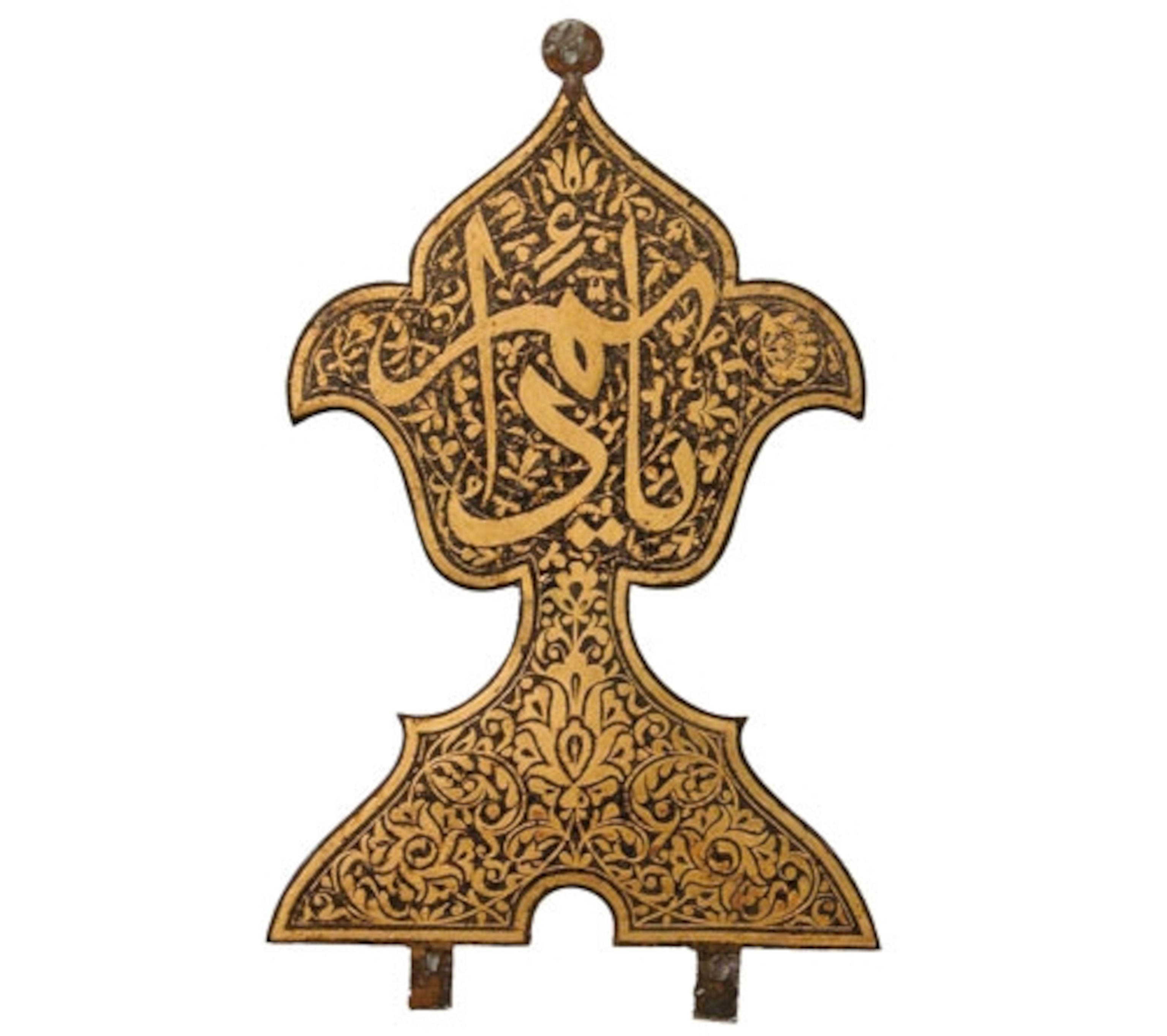
In the last years of meaningful Fatimid rule, Hasan-e Sabbah broke ties with the Ismaili in Cairo. In the early 1100s he decided to expand the reach of his sect, sending missionaries to Syria and Palestine. The Nizari believed that they alone possessed the truth, and that an imam—a true descendant of Ali—would one day reveal himself. To their Sunni enemies whose disdainful chroniclers recorded their deeds, they were delinquents; to the Nizari themselves, they were holy warriors.
The Nizari expansion coincided with the arrival of European crusaders in Syria, who settled there after conquering Jerusalem in 1099. Sometimes the Nizari killed Christians, as was the case with Conrad of Montferrat in Jerusalem, but at other times, they were open to forming alliances with them. To the Nizari, the Christian presence was a minor irritant in their declared goal to await the revelation of the imam. (For more about the Crusades, see also: The Rise and Fall of the Templar.)
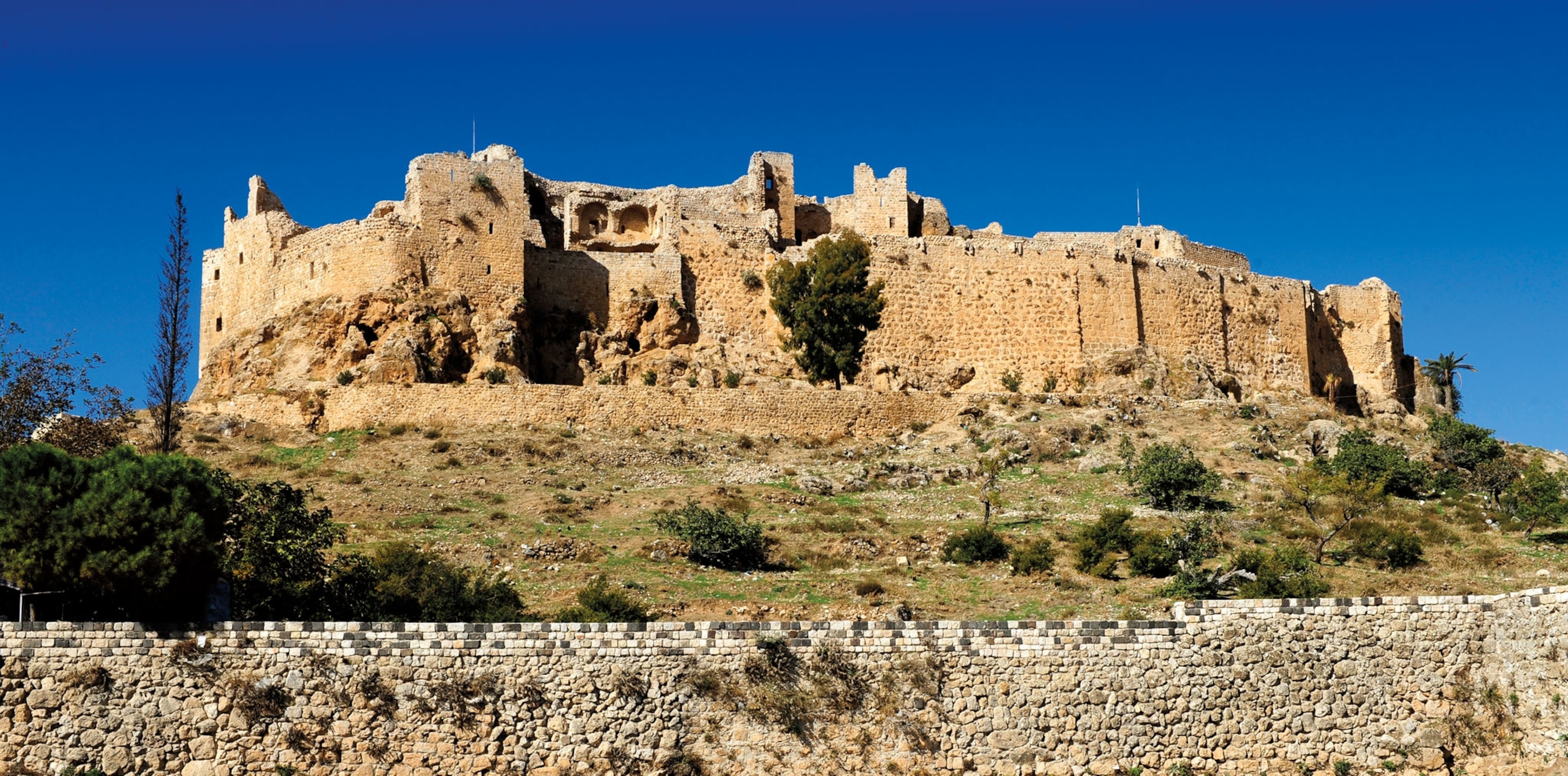
The Old Man of the Mountain
Hasan-e Sabbah died in 1124, and the sect continued without him. In 1138 his successor, Buzurg-Ummid, died, “crushed under the heel of perdition, so Hell [was] heated with the fuel of his carcass,” as a Sunni chronicler colorfully described his demise. But Nizari fortunes remained buoyant, and the murders of high-ranking Sunni figures continued.
In the 1160s leadership fell to Hasan II, who took the branch in a different theological direction. Hasan proclaimed he had received instructions from a hidden imam. True believers, he said, were now relieved from moral customs, such as praying in the direction of Mecca, and could even do things regarded as sinful. This period probably influenced the lurid tales that were later collected by Marco Polo and other Europeans, even though the sect later reverted to a more austere interpretation of Islam.
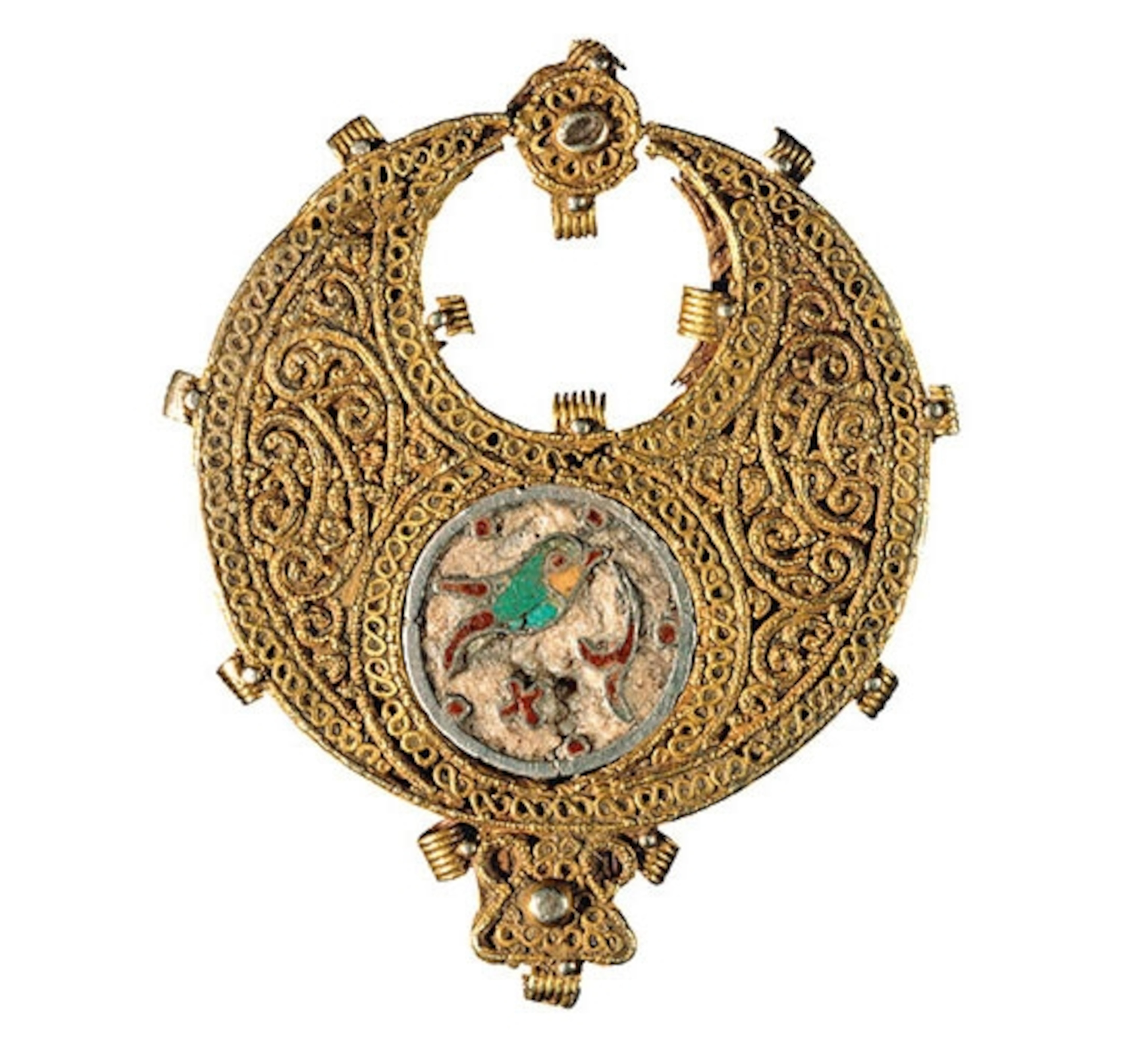
Hasan II’s protégé was Rashid ad-Din as-Sinan, leader of the Syrian Nizari and based at the stronghold of Masyaf. It was Sinan who was known as the Old Man of the Mountain. Hisstruggle brought him into conflict with another central figure in the Crusades, the sultan Saladin, who set out to expel the Christian foe, and unite Islam—a goal the Nizari did not share.
Fedayeen were twice sent to kill him, but Saladin escaped. In response, he besieged Masyaf Castle but then unexpectedly withdrew. Ismaili sources claimed the Nizari had infiltrated Saladin’s most trusted guards, and that he was forced to strike a deal or die. The Nizari survived that attack, but their undoing would not come at Muslim hands. Mongol invaders in the 13th century destroyed Alamut in 1256 and took down the Nizari.
The fall of Alamut
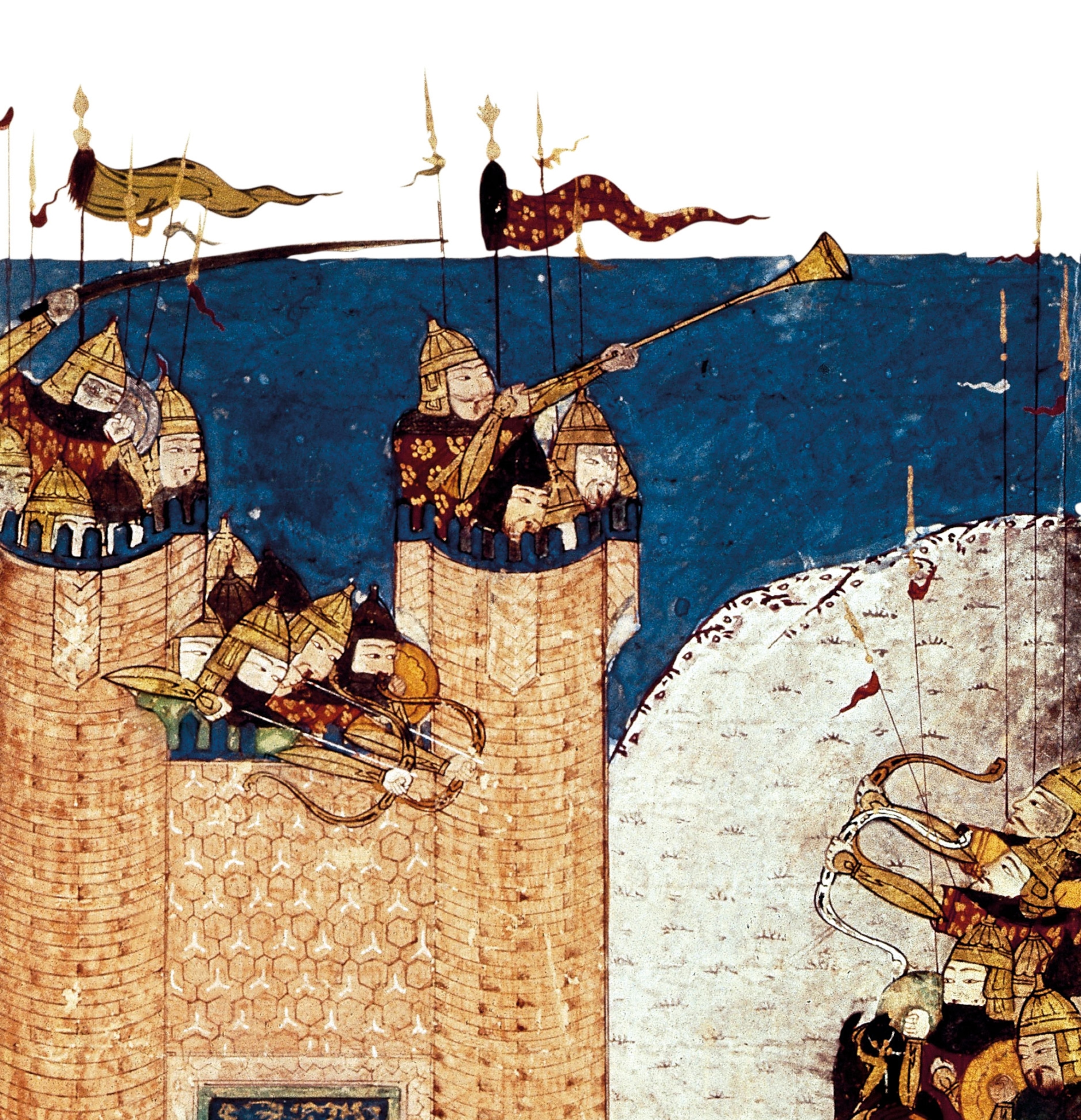
In 1255 Hülegü, brother of the Great Khan of the Mongols, launched an offensive against the Nizari to neutralize attacks by the order against the new strongmen of the region. The Nizari leader, Rukn al-Din Khurshah, attempted to negotiate, but Hülegü had the fortress of Alamut destroyed in 1256, diminishing the strength of the Nizari as a military force.
Europeans continued to circulate legends of the deadly Assassins even after the Mongols took over the Nizari strongholds. The word “assassin” passed into common parlance during the 13th and 14th centuries. Dante uses it in his 14th-century epic poem, The Divine Comedy. In Spanish, “assassin” became the root of the common word for “murder”: asesinato. In modern English, an assassination has retained its specific sense of killing a powerful person for political ends. The romantic idea of the Assassins still lingers in popular culture, like the series of Assassin’s Creed action-adventure video games. (For more on Dante, see also: The hellish history of the devil: Satan in the Middle Ages)
Although the military might of the Nizari faded over time, their faith has survived and is still practiced around the world today with Ismaili living in 25 countries, mainly in Central and South Asia, Africa, and the Middle East. While the reputation of the Assassins was largely built on exaggerations by their enemies, the impact of this small sect and its effective tactics struck fear into mighty powers and has inspired imitators ever since.

